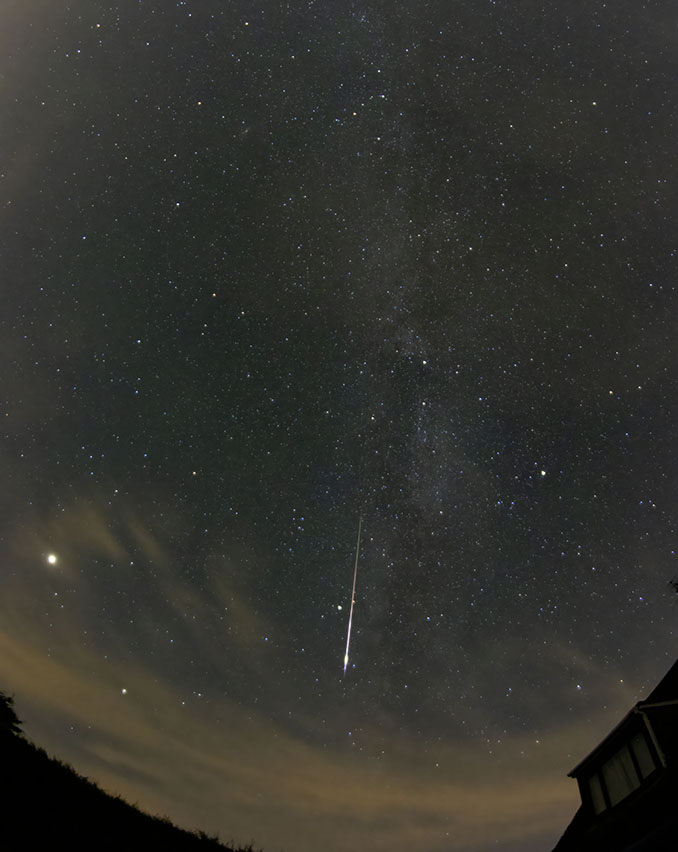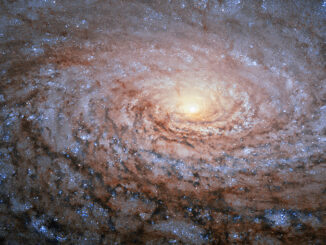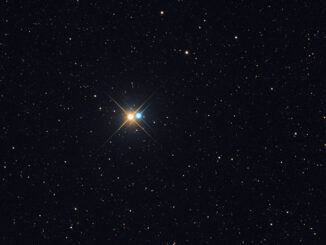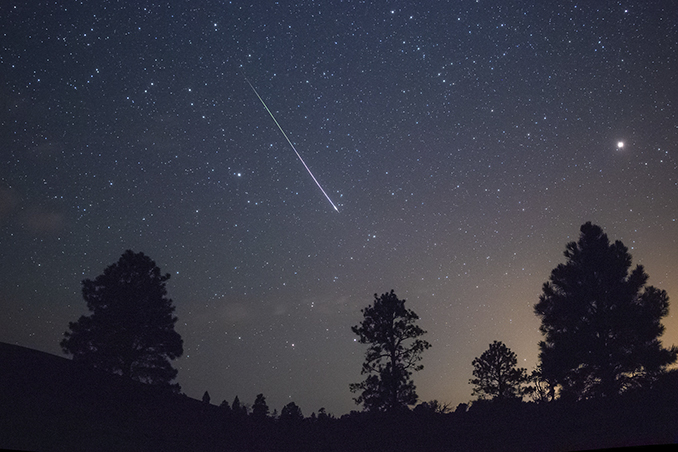
The Orionid meteor shower is one of autumn’s major meteor showers and is a firm favourite with shooting-star watchers. For this year’s return, rates of Orionids are predicted to peak at midnight on 21/22 October, although the shower exhibits no sharp maximum and rates should remain good between 21–23 October.
Meteor showers are seen when Earth encounters minuscule particles left behind usually by periodic comets; some of their material is ejected owing to surface heating that occurs on their repeated trips to the inner Solar System. Over time, particles are spread around the orbit of the comet, and when Earth’s orbit intersects this stream, particles enter the atmosphere and are vaporised, producing streaks of light. The Orionids originate from the orbital debris stream left behind by Halley’s Comet (1P/Halley), the most famous ‘icy snowball’ of all.
From a reasonably dark location, as many as 10–20 meteors may be seen, though how good your local sky conditions are has a big say in how many fainter Orionids you’ll see. Thankfully, the Moon is at a very favourable phase this year; a 12 per cent-illuminated waning crescent rises in Leo at about 3.30am. Only watches conducted during the last hours before dawn may be marred.
All meteor showers are given a figure called a ZHR, the zenithal hourly rate, the likely rate of meteors seen by a single observer assuming the shower’s radiant lies at the zenith in a dark sky. This figure is getting on for double the actual visible rate of meteors.
In the years from 2006 to 2009, the Orionids produced stronger returns, with a ZHR of 40–70 over consecutive nights. Between 2012 and 2019, the ZHR fell to between 20 to 30 meteors. The question of a suspected 12-year periodicity in stronger returns remains, though evidence for this is seen in radar data rather than visual and enhanced rates are not predicted for this year. However, in common with all meteor showers, one needs to be out observing under the stars as can never be absolutely sure that the predicted rate of meteors will be correct.
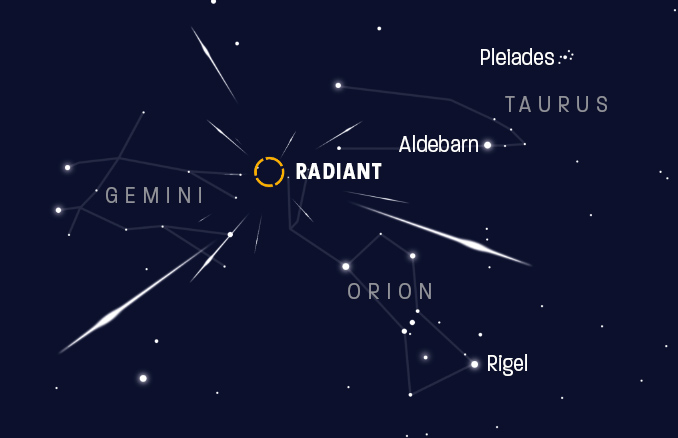
The Orionids produces fast meteors, zipping through the Earth’s tenuous outer atmosphere at around 67 km/sec, and many leave lingering trains, or trails.
Shower meteors appear to streak away from a point in the sky called the radiant. The position of this radiant is determined by the Earth’s trajectory through the meteor stream orbit. The Orionid radiant is located around two degrees north-east of magnitude +4.4 xi Orionis, roughly between brilliant Betelgeuse (alpha Orionis) and magnitude +1.9 Alhena (gamma Geminorum). The meteors are at their brightest when 30 to 40 degrees from the radiant, so you need to visualise where they seem to come from to work out if they are genuine Orionids. During the course of a night you will see many random (sporadic) meteors which are not part of any shower.
The Orionid radiant rises at about 10pm BST, though you’ll profit by putting off your meteor watch until at least between midnight and 1am, by which time the radiant has climbed to a reasonable altitude above the eastern horizon; it lies 30° high in the east by 1.30am BST.
However long you intend to look for meteors you should dress appropriately for potential cold weather by wearing plenty of layers of warm clothing, including a wooly hat and a pair of gloves. Also have a hot drink and a couple of snacks to hand to keep you going. Get comfortably sitting in a reclining chair and try become fully dark adapted (for at least 15–20 minutes) before starting a watch and use only a red torch for illumination.
